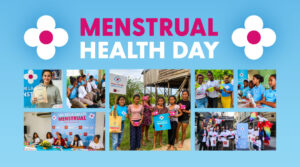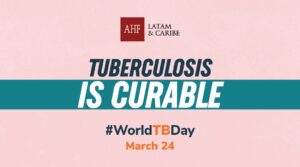I have cold or flu symptoms, now what?
Reminder: Some of the most common Covid-19 symptoms are body aches, headache, sore throat, stuffy/ runny nose, cough, diarrhea, which do not need to be present all at the same time and are also common among other respiratory viruses. Loss of smell and/or taste is more specific to COVID-19. The presence of at least one of these symptoms already indicates the need for isolation to break the chain of transmission!
You should stay in isolation, rest, stay well hydrated, warn the people that you had contact within the previous couple of days, and you should seek medical attention if there are alarming signs.
Laboratory tests do NOT change this guideline, but a positive PCR or antigen/lateral flow test result for SARS-Cov-2 will help to confirm that you are indeed infected and have Covid-19. The sensitivity of the laboratory exams for COVID -19, that means the ability of a test to identify positive cases among sick people with COVID-19 are not 100%. This means that many sick people infected with SARS-Cov-2 will test negative, but they still need to stay in isolation and be advised on the warning signs. This is the recommendation in the current epidemiological scenario (January/2022).
But I am symptomatic and want to get tested, which test to do?
You can do an antigen test for SARS-Cov-2 (virus that causes Covid-19). This swab test is also known as a rapid diagnostic test (RDT) or a lateral flow test (LFT) and can be done at test centers and is also widely available as a self-test. You have the result usually within an hour.
You can also go to a qualified test center and get a PCR (swab test that collects secretion from the nasopharynx) for SARS-Cov-2. This test takes 24 to 48 hours to get the result, is highly sensitive gives in 99% a correct result.
Both tests have best performance when done 3 to 5 days after the onset of the symptoms.
Currently, with the massive increase of infections globally, the compelling advice in case of suspect symptoms (as above) is to do an antigen test, and if positive, consider that you have indeed Covid-19 and follow the locally recommended self/isolation/quarantine procedures.
Remember:
Antibody tests, that measure IgG and/or IgM for SARS-Cov-2 (Covid-19), should not be done. They are NOT USEFUL to demonstrate active disease and are NOT USEFUL to evaluate vaccine response. They remain reserved for scientific research and epidemiological surveys
I have had contact (indoors and without a mask) with someone who is symptomatic and/or has Covid-19. I am asymptomatic (without any symptoms), what test should I do?
All asymptomatic persons (vaccinated or unvaccinated) with potential or known exposure should monitor for symptoms for 14 days. In this scenario of lack of symptoms, diagnostic tests lose a lot of its sensitivity (ability to identify people who are actually sick and at risk of transmitting the virus).
In persons with exposure to SARS-CoV-2, testing is generally not useful in the first 48 hours after exposure since the virus will not have achieved a sufficient viral load. The most appropriate window for testing is generally considered to be 5 to 7 days after exposure, which is the average peak of symptoms and viral load.
As for isolation:
We are experiencing a major increase in the number of COVID-19 cases of and other respiratory viruses. Most robust scientific evidence guides the recommendation that people with COVID-19 suspicion or with a positive PCR or antigen test for SARS-Cov-2 (the virus that causes Covid-19), should be isolated for 10 days A from the onset of symptoms. As for people without symptoms (asymptomatic) the isolation period should start from the date of the test result. Symptomatic people can be released from isolation after the 10th day A from the onset of symptoms, provided they show improvement of symptoms and have been afebrile for at least 24 hours.
Many countries have shortened the recommended 10 days isolation to 7 days (US) or even 5 days (UK), mainly with the objective to keep people as short as possible out of the work and out of the schools. The flipside of the coin is that a minority of infected persons may continue to transmit the virus between the 5th and 10th day of symptom onset.
In any case, local recommendations regarding isolation should be followed, as the characteristics of the pandemic vary wildly between regions and countries
If I test positive and have only mild symptoms that quickly disappear, can I shorten the isolation period?
Given the high degree of uncertainty about the transmissibility period of the currently dominant SARS-Cov-2 Ômicron variant (causing COVID-19), and in view of evidence suggesting its greater transmissibility, reducing the recommended isolation period may in the short term contribute to the current sharp rise in cases.
You should remember that infected persons may continue to transmit the virus between the 5th and 10th day of symptom onset, even if there are no symptoms at all anymore. We advise to stick to the local guidelines, but in case of certain categories of essential workers, who are badly needed, a negative antigen test or 2 consecutive negative antigen tests when there are no symptoms anymore, could assure that you are not transmitting and can go back to work/school of course with strict FFP2 masking and distancing.
Reference: Rapid Diagnostic Testing for SARS-CoV-2. Paul K. Drain, M.D., M.P.H. The New England Journal of Medicine. January 7, 2022, at NEJM.org. DOI: 10.1056/NEJMcp2117115
We understand that in a personnel contingency scenario, measures should be taken to re-evaluate asymptomatic people (people with NO signs or symptoms – no fever, no headache, no runny nose, no cough, among others), especially in health care facilities. We have already learned from this pandemic that the disruption of health services has a negative impact on people’s health. People living with HIV in particular already suffer the negative impact of the interruption of essential services to their care, and services must organize themselves so that their doors remain open.
In a pandemic scenario it is important to think that if the minority of infected persons continue to transmit the virus between the 5th and 10th day of disease onset, 10% according to a small Japanese study B, this 10% of many infected people could mean a lot of people, and this contributes to the perpetuation of the chain of transmission, the collapse of health systems, and the risk of new variants! Active epidemiological investigation on SARS-CoV-2 infection caused by Omicron variant (Pango lineage B.1.1.529) in Japan: preliminary report on infectious period. National Institute of Infectious Diseases Disease Control and Prevention Center, National Center for Global Health and Medicine.
This Journal feature begins with a case vignette highlighting a common clinical problem. Evidence. Supporting.various strategies is then presented, followed by a review of formal guidelines, when they exist. The article ends with the author’s clinical recommendations.







